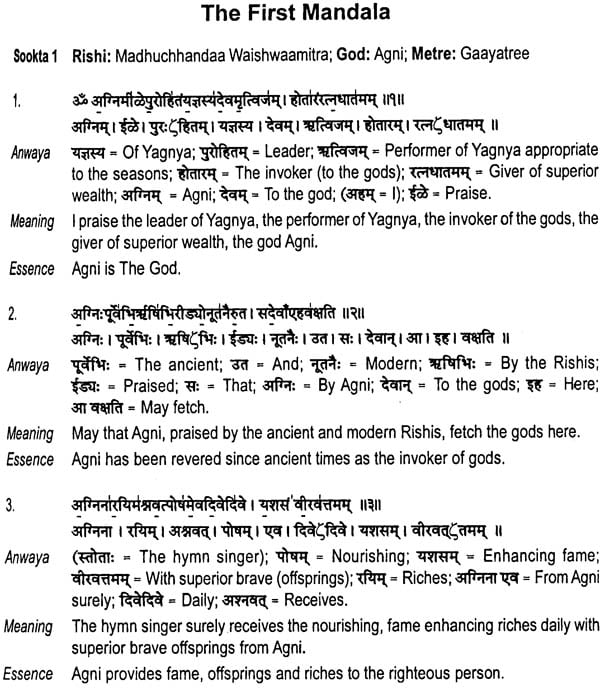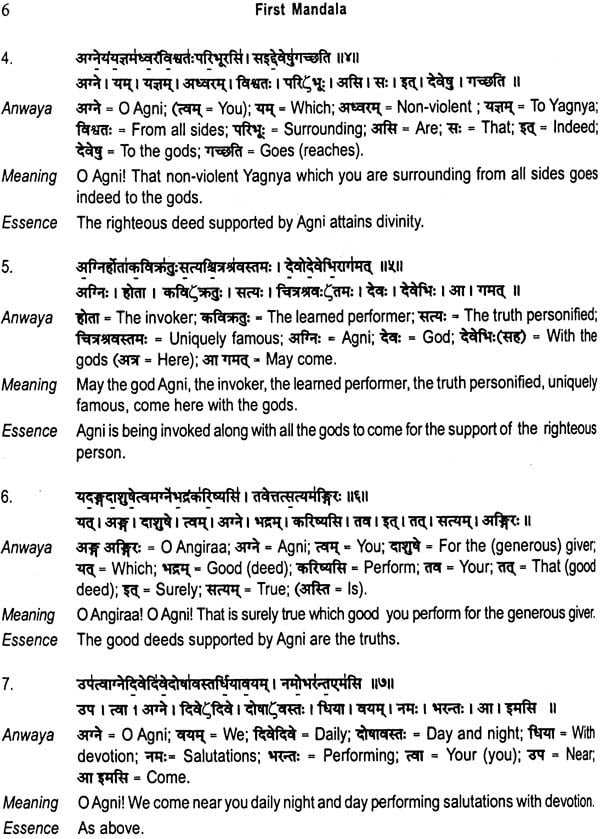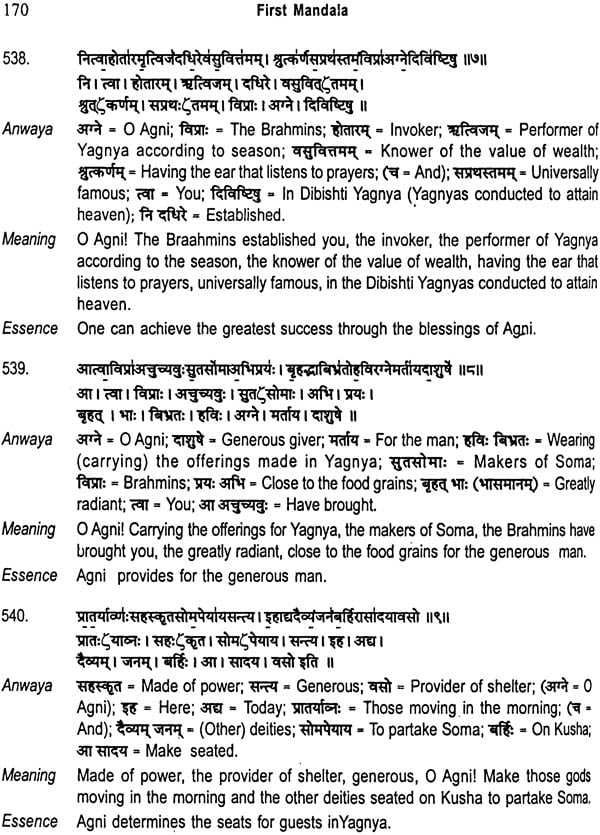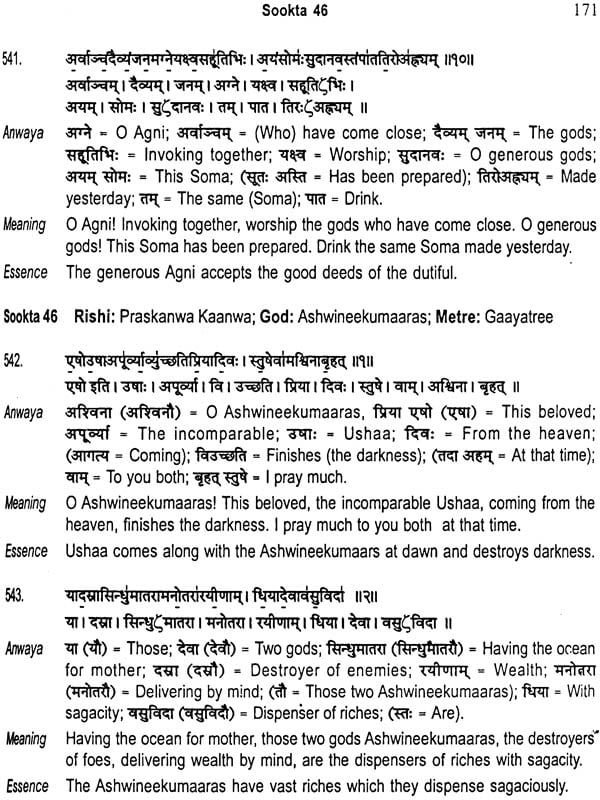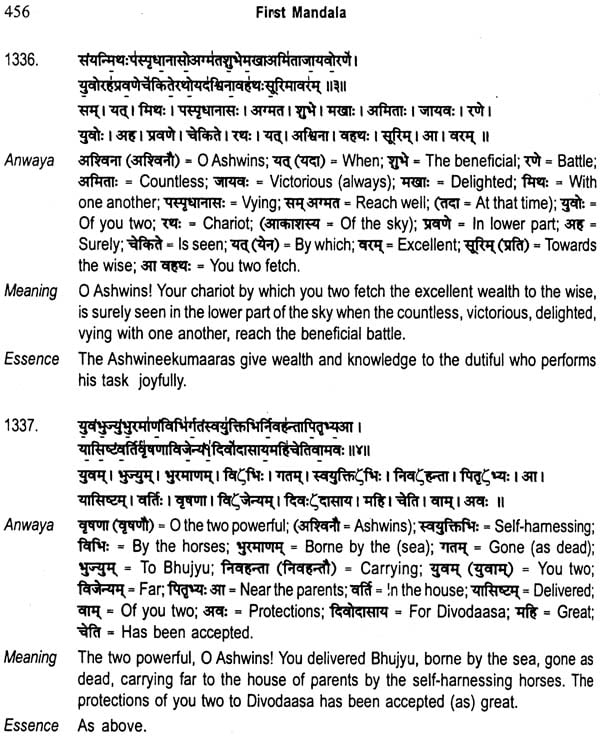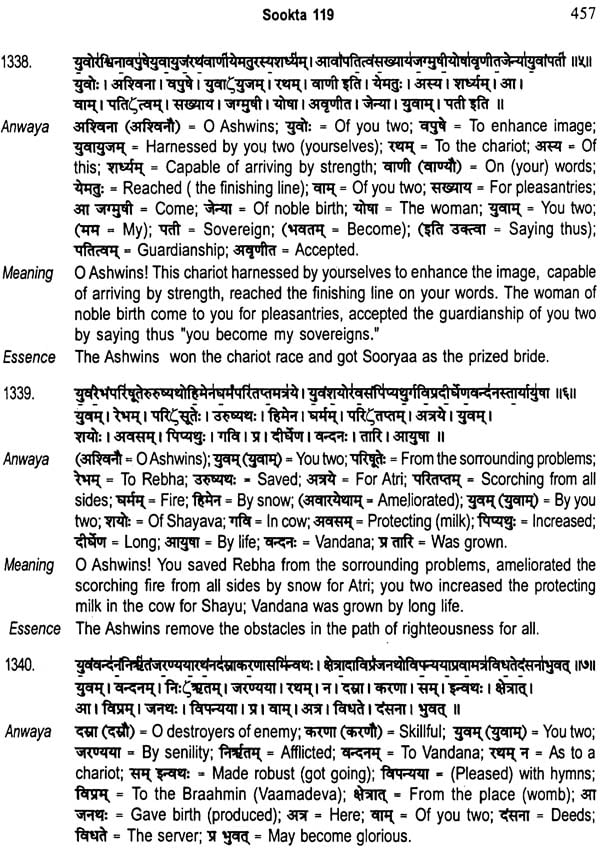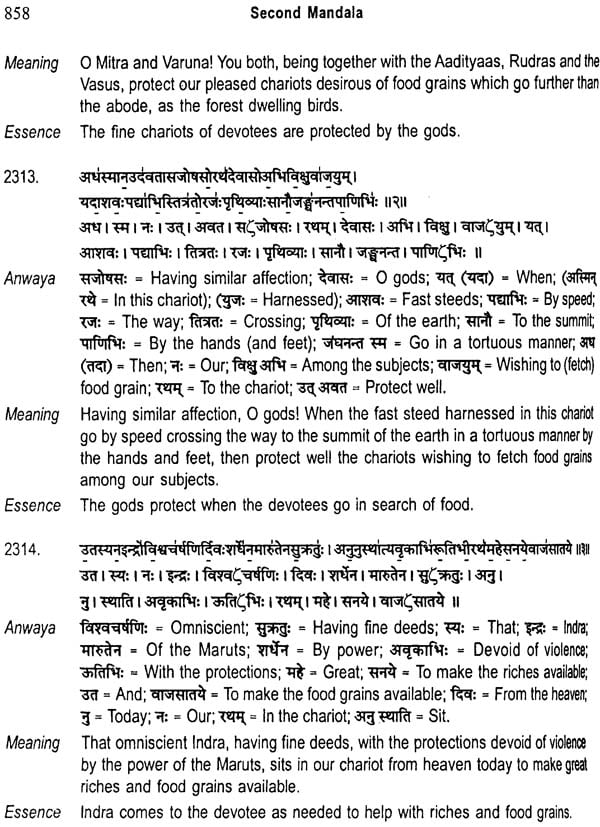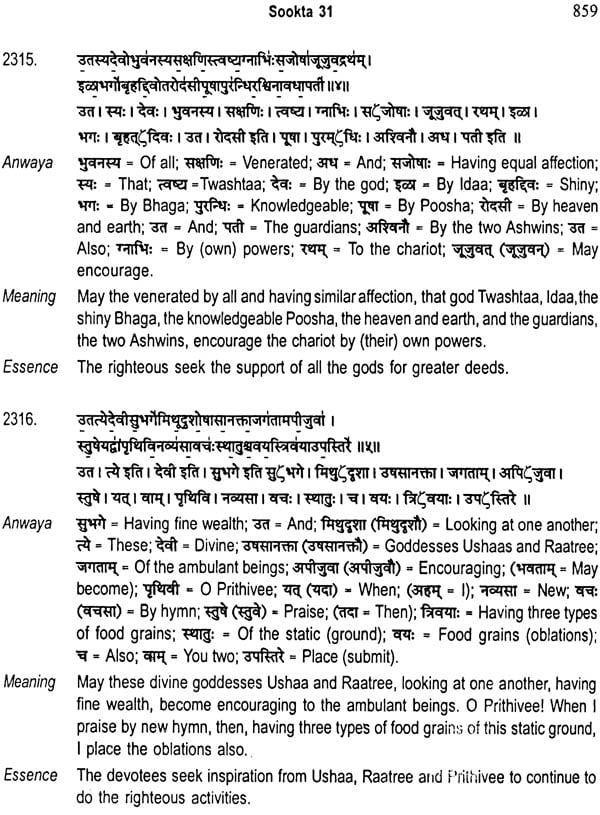
Modern English Translation of The Rig Veda Samhitaa (Volume I)
Book Specification
| Item Code: | NAJ092 |
| Author: | Prasanna Chandra Gautam |
| Publisher: | Bharatiya Vidya Bhavan |
| Language: | Sanskrit Text with Word To Word Meaning and English Translation |
| Edition: | 2014 |
| ISBN: | 9788172764944 |
| Pages: | 970 |
| Cover: | Paperback |
| Other Details | 9.5 inch x 7.0 inch |
| Weight | 1.70 kg |
Book Description
About the Book
The Rig Veda Samhitaa, the most ancient document known to man, has been resurrected word for word in modern English. often emulating the original Mantras in style and presentation.
This is the first time the whole of the Rig Veda Samhitaa has been translated in English directly from the Sanskrit Mantras, with each Mantra having first been interpreted by a group of six scholars of distinction. According to the author there is no similar work, apart from St. James Bible, which has been translated in this manner. An authentic and unique translation, this work is surely a masterpiece. Espousing the source of the ancient knowledge and philosophy, this also makes an invaluable tool for research into the earlier Aryan civilisation.
A must for the scholars and the shelves of all the libraries, this book is a testament to Dr. Gautam's endeavour in search of the truth. The Rig Vedic Mantras need no longer remain in mystery and speculation.
Preface
It all started when I was asked to read a few Mantras from the Rig Veda and also explain their meaning at a wedding in 2006. I agreed to do this but later found that the Mantras were extremely difficult to interpret correctly. At first, I attributed this difficulty to my limited knowledge of Sanskrit but soon realised that the formulae like nature of the Mantras, often without a verb, or noun or adjective or with superlatives of the adjectives with elliptical allegory and implications had caused this confusion. Therefore, I began to seek help from English and Hindi translations and commentaries. I became impressed by the scholarship of the translators but was unsure whether I or they had been able to comprehend the meaning intended by the1ieers who had composed the original hymns. All the works published thus far in English and Indian languages were not 'word for word' translations. The diversity of the commentaries and the far fetched claims of some of the leamed translators made the Rig Veda an enigma to me. Indeed, I could not find a translation that had been agreed as the most accurate by any two scholars. Many had felt the need for a modern and authoritative translation of the Rig Veda in English. All these facts roused my interest and prompted me to seek the truth of these Mantras which should, after all, mean the same for every one.
This led me to the study of the Rig Veda in a systematic manner. To begin with, I planned to get every word of the Mantras translated collectively in Nepali and English as faithfully as possible by a group of scholars with different expertise working together. The purport of the text would only be determined after all the scholars would agree to the meaning of every word in its appropriate context. This would need to be fully supported by all the available Sanskrit encyclopaedias and dictionaries, grammar, and relevant reference materials.
I did not need to conform to any dogmas or constraints in the pursuit of this project due to the fact that this was purely an academic exercise for which I was using my own resources. The experience of a life time of teaching and researching in medicine provided further guidance in the design and conduct of this project.
A team of scholars was formed under my leadership in Kathmandu, January 2008. A minimum of a Masters degree from a recognised Sanskrit university and experience of research, teaching and publications were essential to be short listed for the interviews in a nationwide search of suitable scholars. Some knowledge of English was desirable. Another essential criterion to be appointed was to be able to give full committment for the project, work unlimited hours as required and agree to search for the truth of the Mantras, irrespective of any peer pressure, the prevalent conventions and one's own bias.
Five scholars, namely Puma Chandra Dhungel, Tilak Prasad Luitel, Narayan Prasad Poudel, Hari Prasac'Kharaland Shyam Mani Nepal were appointed after formal interviews. All fulfilled the minimum qualification as above. All had good command in Sanskrit, Hindi and Nepali. Included in the team was Mr. Ram Sundar Humagain, a graduate student with exceptional skills in typing and computing. All were given resources to carry out independent and personal studies of the Vedas, particularly the Rig Veda for the initial three months and form an idea on how to conduct the massive task of translation within one year from the starting date. We began the collective work of simultaneously translating the Rik Mantras from Sanskrit into Nepali and English in April 2008 and completed the project in July 2009.
A small representative sample, including both Nepali and English sections, titled "Rig Veda: An outline of authentic translation: Examples from the first half" was published as a book (ISBN 978-9937 -2-1931-0) in December 2009 in Kathmandu after we had translated the first five thousand Mantras. This outlined the process and contained one hundred and thirteen translated Mantras selected at random from the first five thousand. The book was launched by the Chief Justice of the Supreme Court amidst two hundred eminent academics and literary figures in Kathmandu. This generated a great deal of positive feedback which helped us to improve our work. This also prevented any potential religious discontentment and provided the assurance that this was purely an academic enterprise without intending any religious offence or insult: Nepal has more than eighty percent of her twenty eight million population as Hindus.
The Nepali version (Rig Veda Samhitaa Nepalima; 3463 pages in two large volumes) was published in December, 2010 at Kathmandu. This was launched and dedicated to the nation by Dr. Ram Varan Yadav, the first President of the Republic of Nepal.
It became clear during the revision of the manuscript in English that it would be desirable to seek constructive suggestions from a wide readership from Nepal and abroad to incorporate in the final draft. Hence a small book called 'An Introduction to the modern English Translation of Rig Veda Samhitaa with Mantra, Pada Patha, Anwaya, Meaning and Essence' (ISBN 978-9937 -2-3240-1) was published in Kathmandu in March 2011. This sample of our work contained many exerpts from the main manuscript, including the factual English translation of 332 Sooktas. This generated many comments which we have gratefully incorporated in this manuscript.
Contents
| 1. | Acknowledgement | i |
| 2. | The team of translators | iii |
| 3. | Preface | v |
| 4. | Introduction to ancient Vedic literature | xi |
| 5. | The relevance of the Vedas in the modern world | xviii |
| 6. | The origin of the Vedas | xx |
| 7. | The synopsis | xxiii |
| 8. | The grammar and the Praatishaakhyas | xxviii |
| 9. | The English translation of the Rig Veda | xxxiii |
| 10. | A guide to the reader | xxxvii |
| 11. | Rishi, Yagnya and God | xl |
| 12. | First Mandala (Sooktas 1-191) | 1 |
| 13. | Second Mandala (Sooktas 1-43) | 731 |
| 14. | References | 909 |
| 15. | Bibliography | 910 |
| -16. | Appendix - 1 : Sookta for Indra, Agni, Vaayu and Soma | 920 |
| 17. | Appendix - 2 : Introduction to religious ceremonials | 922 |
